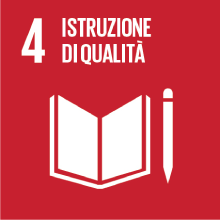THEORY AND APPLICATION OF COMPLEX NETWORKS
- Anno accademico
- 2021/2022 Programmi anni precedenti
- Titolo corso in inglese
- THEORY AND APPLICATION OF COMPLEX NETWORKS
- Codice insegnamento
- PHD0159 (AF:359837 AR:188470)
- Modalità
- Crediti formativi universitari
- 8
- Livello laurea
- Corso di Dottorato (D.M.45)
- Settore scientifico disciplinare
- FIS/02
- Periodo
- II Semestre
- Anno corso
- 1
- Sede
- VENEZIA
- Spazio Moodle
- Link allo spazio del corso
Inquadramento dell'insegnamento nel percorso del corso di studio
Una versione preliminare delle slides utilizzate a lezione sono scaricabili a http://www.guidocaldarelli.com/index.php/phd-lectures
Risultati di apprendimento attesi
Prerequisiti
Contenuti
TEORIA
L1. Basic Definitions, Statistical Distributions, Universality, Fractals, Self-Organised Criticality
a. L. A. Adamic Zipf, Power-laws and Pareto - a ranking tutorial (2002)
b. Bak, P., Tang, C. & Wiesenfeld, K. Phys. Rev. Lett. 59, 381–384 (1987).
c. Mitzenmacher, M. A Internet Math. 1, 226–251 (2004).
L2. Properties of Complex Networks, scale invariance of degree, small world, clustering, modularity
a. M.E.J. Newman SIAM Review (2003)
b. R. Albert, A.-L Barabási Review of Modern Physics (2001)
L3. Handling Graphs Pajek, Python, format of available software and visualization and plotting
a. http://vlado.fmf.uni-lj.si/pub/networks/pajek
b. G. Caldarelli, A. Chessa Data Science and Complex Networks OUP (2016).
L4. Basic on centrality and communities, closeness, betweenness, modularity
a. L. Katz Psychometrika 18, 39–43 (1953).
L5. Different kinds of networks, hypergraphs, multigraphs. simplicial complexes
a. G. Ghoshal, V. Zlatić, G. Caldarelli, M.E.J. Newman, PRE 79 066118 (2009).
b. V. Zlatić, G. Ghoshal, G. Caldarelli, PRE 80, 036118 (2009).
c. Bianconi, G. Multilayer Networks. Multilayer Networks: Structure and Function, OUP (2018).
L6. Ranking in Graphs
a. Page, L., Brin, S., Motwami, R., Winograd, T. & Motwani, R. (Stanford InfoLab, 1999).
b. Kleinberg, J. ACM Comput. Surv. 31, 5-es (1999).
L7. Static Models Random Graph, Small World, configuration models
a. Erdös, P. & Rényi, A. Publ. Math. Debrecen 6, 290–297 (1959).
b. Watts, D. J. & Strogatz, S. H. Nature 393, 440–442 (1998).
L8. Dynamic Models Barabási-Albert and modifications
a. R. Albert, A.-L Barabási Review of Modern Physics (2001)
L9. Fitness models
a. Bianconi, G. & Barabási, A.-L. Europhys. Lett. 54, 436–442 (2001).
b. G. Caldarelli, A. Capocci, P. De Los Rios, M.A. Muñoz, PRL 89, 258702 (2002).
APPLICAZIONI
L10. Networks in Medicine I, Diseasome
L11. Networks in Medicine II Molecular Networks
L12. Ecological Networks I Definition of Food Chain, food webs
L13. Ecological Networks II Examples
L14. Brain Networks I Detection Tools, fMRI
L15. Brain Networks II Network based tools for diagnosis
a. R. Mastrandrea, F. Piras, A. Gabrielli, G. Caldarelli, G. Spalletta, T. Gili arXiv:1901.08521
PARTE II (15 hours)
TEORIA
L16. River Networks, Trees
a. Maritan, A. et al. Scaling laws for river networks. Phys. Rev. E 53, 1510–1515 (1996).
L17. Bipartite Networks
L18. Spectral Properties Eigenvectors Eigenvalues,
L19. Laplacian Graphs
L20. Statistical Physics of Networks I, Information Theory, entropy, Maximum Likelihood
a. Bianconi, G. PRE 79, 036114 (2009)
L21. Statistical Physics of Networks II Reconstruction and Relevance
a. G. Cimini, T. Squartini, F. Saracco, D. Garlaschelli, A. Gabrielli, G. Caldarelli Nature Physics Reviews 1, 52-70 (2019).
L22. Centrality Measures
L23. Epidemics Dynamical Processes on Networks
a. Pastor-Satorras, R. & Vespignani, A., PRL 86, 3200–3203 (2001).
L24. Epidemic Models SI, SIR, models for COVID-19
APPLICAZIONI
L25. Social Networks I, Computational Social Science, historical networks
L26. Social Networks II, historical networks
L27. Economic Networks World Trade Web, Economic Complexity
a. Hidalgo, C. A. et al. Science 317, 482–487 (2007).
L28. Financial Networks Debtrank
a. Battiston, S. et al. DebtRank: too central to fail? Financial networks, the FED and systemic risk. Sci. Rep. 2, 541 (2012).
L29. Fake News, definition Twitter, Facebook WWW
L30. Fake News bots
a. Caldarelli, G., De Nicola, R., Del Vigna, F., Petrocchi, M. & Saracco, F. . Commun. Phys. 3, 81 (2020)
Testi di riferimento
• Easley, Kleinberg “Networks Crowds and Markets” CUP (2010)
http://www.cs.cornell.edu/home/kleinber/networks-book/
• A-L Barabási Network Science CUP (2016) http://networksciencebook.com/
Modalità di verifica dell'apprendimento
Modalità di esame
Metodi didattici
Obiettivi Agenda 2030 per lo sviluppo sostenibile
Questo insegnamento tratta argomenti connessi alla macroarea "Capitale umano, salute, educazione" e concorre alla realizzazione dei relativi obiettivi ONU dell'Agenda 2030 per lo Sviluppo Sostenibile


